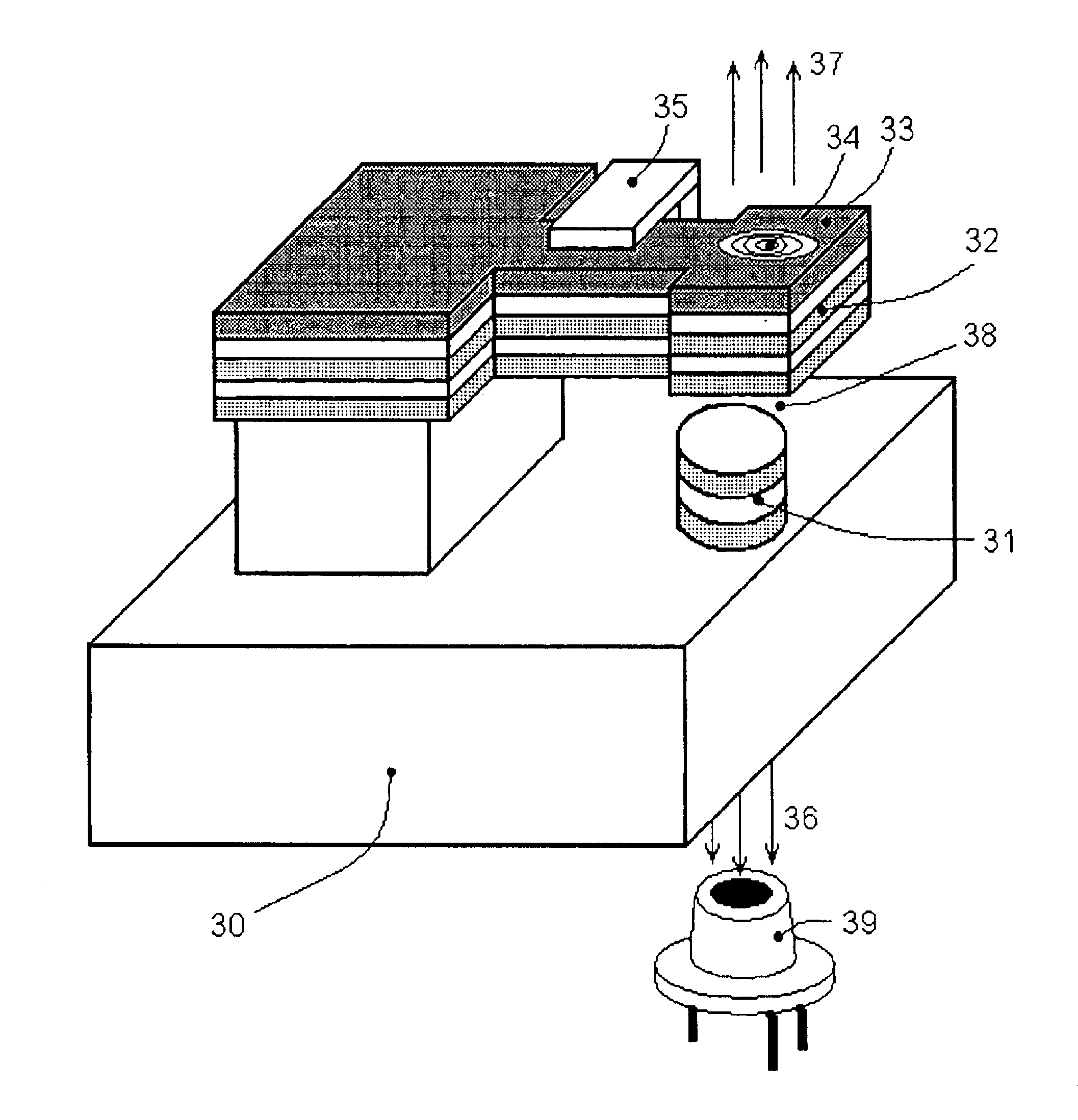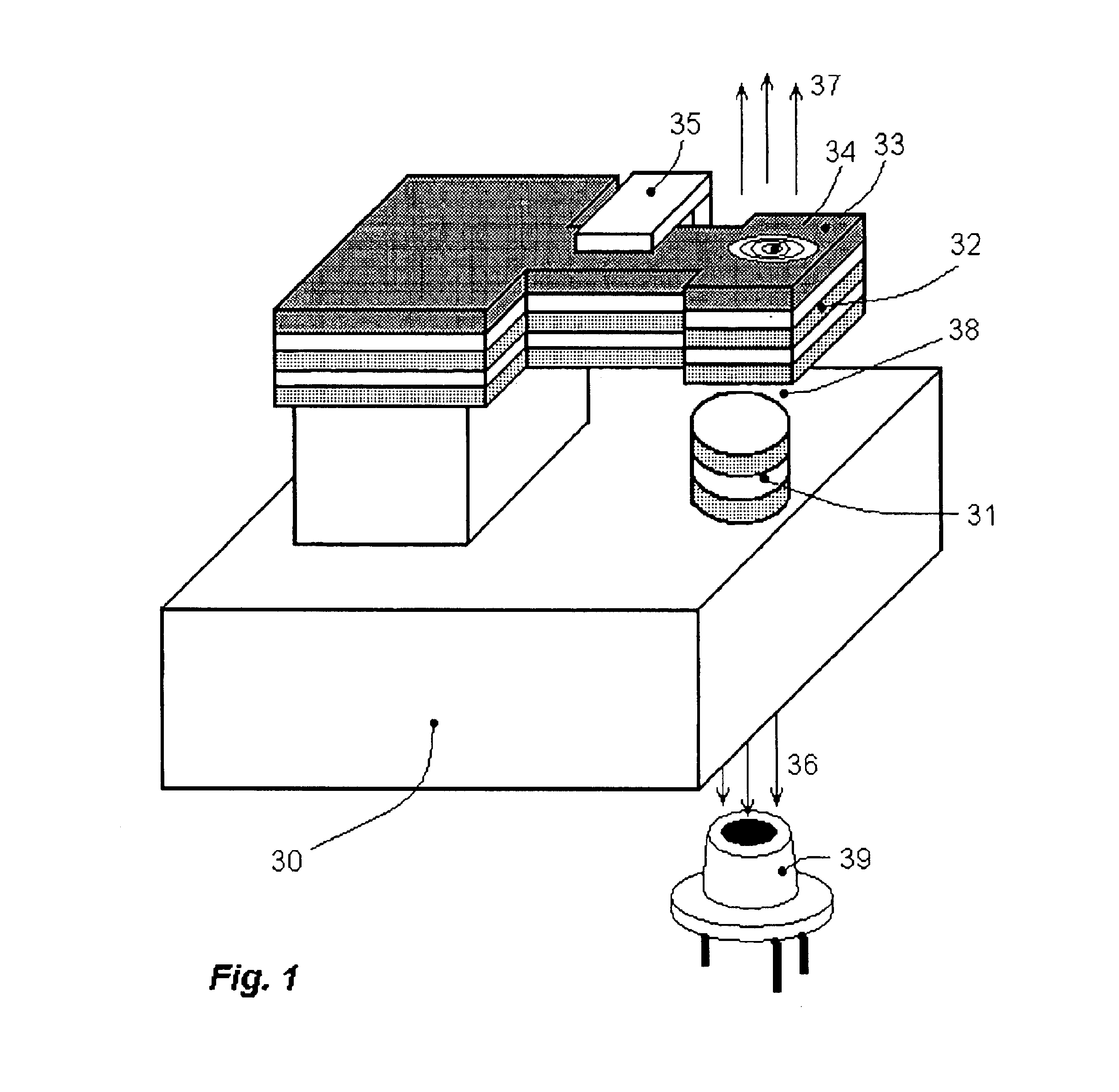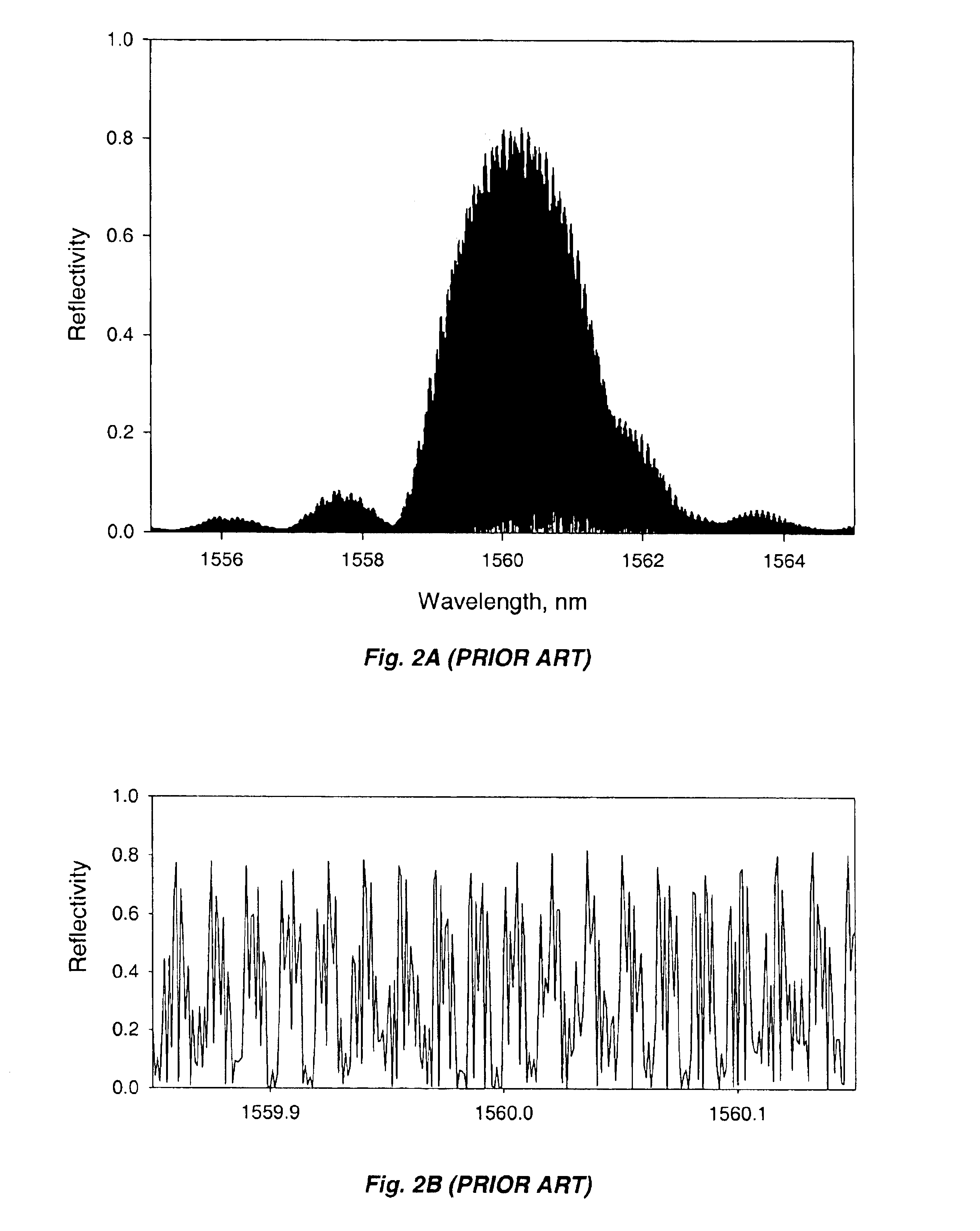System and method for measuring physical stimuli using vertical cavity surface emitting lasers with integrated tuning means
a technology of lasers and lasers, applied in the field of systems using vertical cavities and surface emitting lasers, can solve the problems of grating interference, large cost of most solutions, and wide use of such sensors in the marketplace, and achieve the effects of good coherence length, simple manufacturing, and fast tuning speed
- Summary
- Abstract
- Description
- Claims
- Application Information
AI Technical Summary
Benefits of technology
Problems solved by technology
Method used
Image
Examples
Embodiment Construction
FIG. 1 is an illustrative schematic drawing of an exemplary illustrative VCSEL incorporating one non-limiting example of an integrated MEMS (micro-electromechanical machined system) tuning mechanism in the form of a cantilevered mirror and optional lens. Substrate chip 30 has fabricated upon it, when in wafer form, a multilayer stack of materials forming the light emitting VCSEL 31 and tuning components. Exemplary tuning components may consist of a mirror stack 32, an actuator and structural means 33 that change the tuning cavity length 38, a diffractive optical lens 34 (optional), and a capacitive cantilever position monitor 35 (optional). Light beams may be emitted in directions 36 and / or 37. If either mirror 32 or bottom of stack 31 is opaque, light is emitted only in one direction 37 or 36 respectively. Emission in both directions is possible if both 32 and 31 are partially transparent. This arrangement provides a simple means for optical power monitoring with a photodiode 39 fo...
PUM
| Property | Measurement | Unit |
|---|---|---|
| wavelength range | aaaaa | aaaaa |
| wavelength range | aaaaa | aaaaa |
| coherence length | aaaaa | aaaaa |
Abstract
Description
Claims
Application Information
 Login to View More
Login to View More - R&D
- Intellectual Property
- Life Sciences
- Materials
- Tech Scout
- Unparalleled Data Quality
- Higher Quality Content
- 60% Fewer Hallucinations
Browse by: Latest US Patents, China's latest patents, Technical Efficacy Thesaurus, Application Domain, Technology Topic, Popular Technical Reports.
© 2025 PatSnap. All rights reserved.Legal|Privacy policy|Modern Slavery Act Transparency Statement|Sitemap|About US| Contact US: help@patsnap.com



